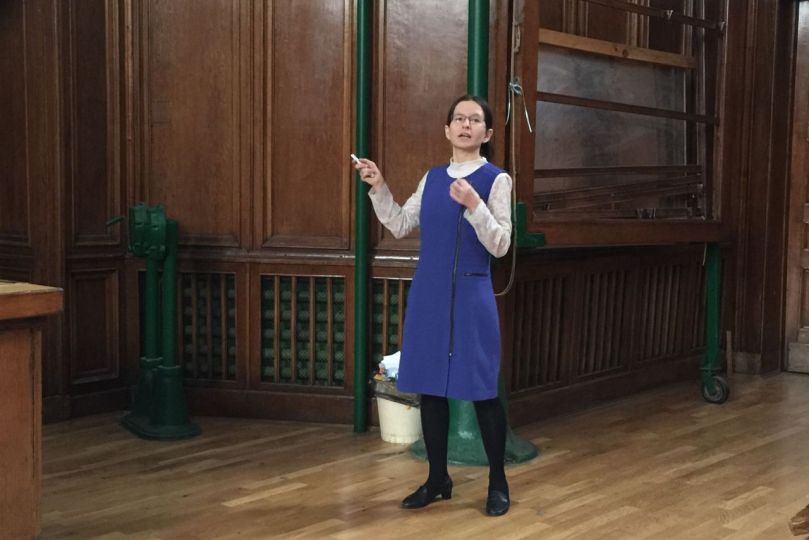How to measure the brain development?
PhD Sofya Kulikova, Senior Research Fellow of the HSE-Perm's Laboratory of Interdisciplinary Empirical Studies, read a popular science lecture based on the results of her own study in Lomonosov State University of Moscow. Such possibility was granted to the finalists of all-Russian contest of popular science articles “In simple words about complex things”.

The lecture took place within the framework of “Open nanotechnological conference classes for schoolchildren, students and lecturers”. The main difficulty for the lecturers was the necessity to tell about their topics as simply and interestingly as possible to schoolchildren who voted for absolute winners and prize winners. Sofya Kulikova became one of the winners on the results of the voting, that means, an absolute winner of all-Russian contest of popular science articles “In simple words about complex things”.
Sofya shared her impressions and told us about her study.
- The article which I submitted for the contest (“How to measure the brain development?”) was focused on the problem of multiparameter description of nervous connections development in human brain. The paper was based on my previous research, the results of which are laid down in detail here.
If we describe the problem in brief, the following picture arises. Our brain is a dynamically developing structure. But its development is uneven: at first those nervous connections are developed that are responsible for vital functions and only after them – those responsible for more complex tasks such as calculating or speech. Magnetic resonance imaging (MRI) allows to receive a variety of different parameters reflecting the various biochemical properties of nervous connections. That’s why we cannot select only one parameter to describe such complex system as our brain.
In my study I suggested to unite MRI parameters with the help of Mahalanobis distance for multiparameter description of nervous connections development. Such model allowed not only to arrange nervous connections from the most rapidly developing to the “falling behind”, but also to evaluate numerically the “lag” in development between individual nervous connections.
This article is also planned to be published in “The Potential” journal. As for my victory, I assessed my odds as quite real. I have the experience in popular scientific statement of material. Of course, there was no absolute confidence. First of all, other participants also presented very deserving works, and secondly, I used the genre of popular science article for the first time, before I only had the chance to read popular science lectures.
Emotions from the contest are only positive: it was very interesting to me to work over the article. I like speaking to attentive audience, and I have a great pleasure to understand that I can state my results in such a way that they are understandable and interesting to everyone.

